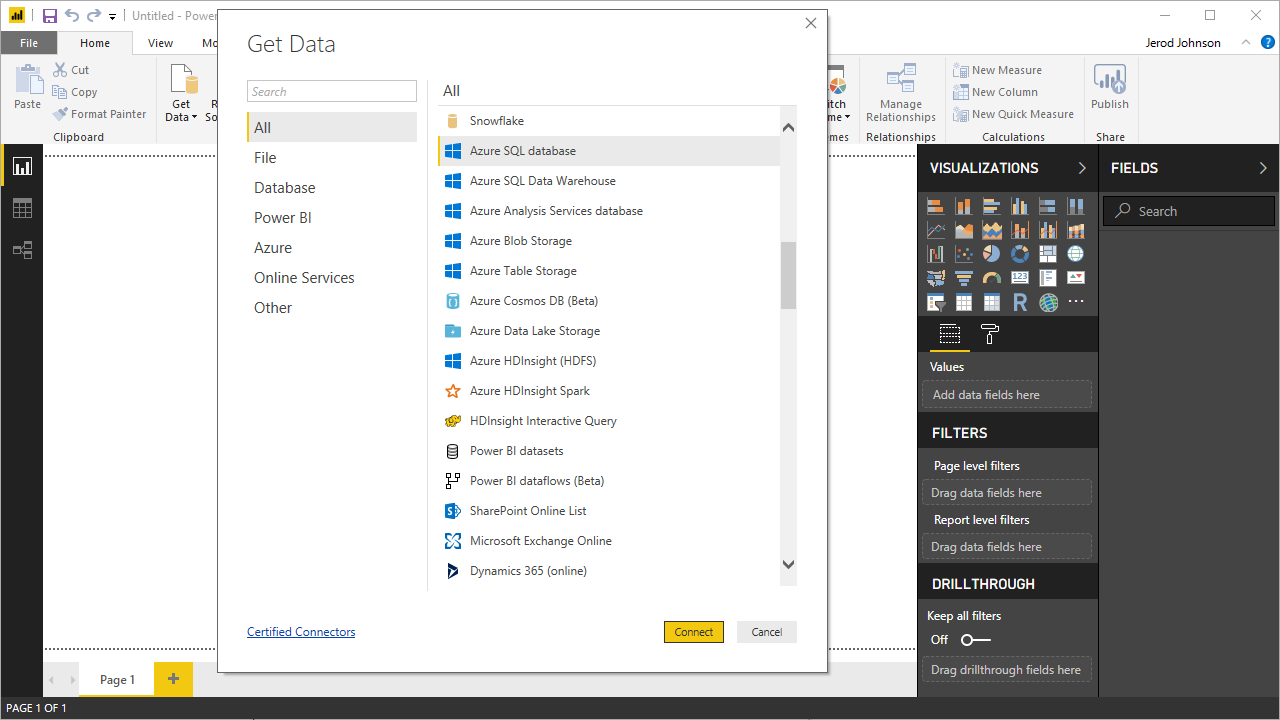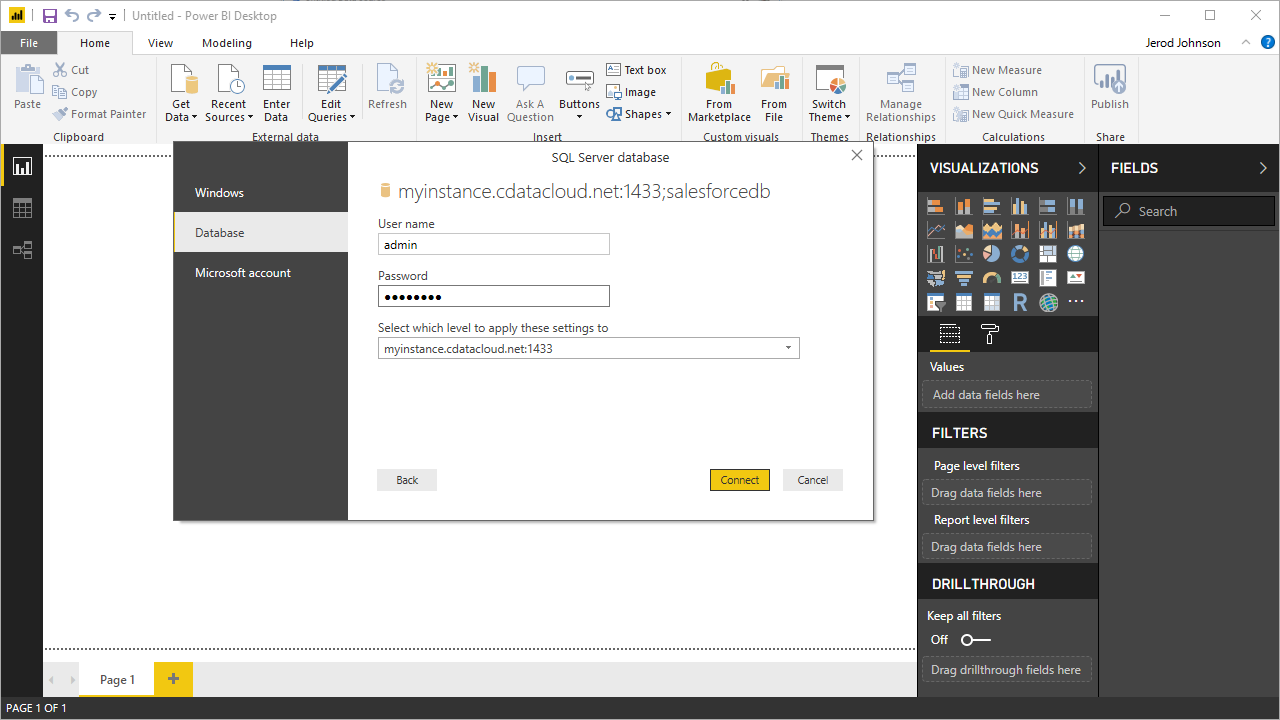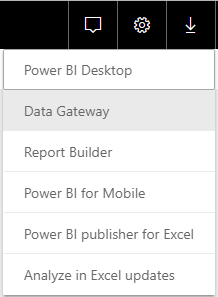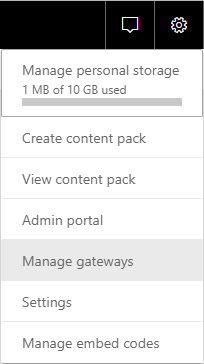Discover how a bimodal integration strategy can address the major data management challenges facing your organization today.
Get the Report →Visualize Live HCL Domino Data in the Power BI Service
Use CData Connect Cloud to connect to live HCL Domino data and create custom reports in the Power BI Service through the On-Premises Gateway.
Power BI transforms your company's data into rich visuals for you to collect and organize so you can focus on what matters to you. When paired with CData Connect Cloud, you get instant access to HCL Domino data for visualizations, dashboards, and more. This article shows how to build and publish a dataset from HCL Domino data in Power BI and then create reports on HCL Domino data in the Power BI service.
CData Connect Cloud provides a pure SQL interface for HCL Domino, allowing you to easily build reports from live HCL Domino data in Power BI — with no need to replicate the data. As you build visualizations, Power BI generates SQL queries to gather data. Using optimized data processing out of the box, CData Connect Cloud pushes all supported SQL operations (filters, JOINs, etc) directly to HCL Domino, leveraging server-side processing to quickly return HCL Domino data.
NOTE: You can also import HCL Domino data into Power BI through Connect Cloud (instead of using the on-premise gateway). Read how in the related Knowledge Base article.
Configure HCL Domino Connectivity for Power BI
Connectivity to HCL Domino from Power BI is made possible through CData Connect Cloud. To work with HCL Domino data from Power BI, we start by creating and configuring a HCL Domino connection.
- Log into Connect Cloud, click Connections and click Add Connection
![Adding a Connection]()
- Select "HCL Domino" from the Add Connection panel
![Selecting a data source]()
-
Enter the necessary authentication properties to connect to HCL Domino.
Prerequisites
The connector requires the Proton component to be installed. Normally, Proton is distributed as part of the AppDev pack. See the HCL documentation for instructions on acquiring and installing Proton or the AppDev pack.
Once the Proton service is installed and running, you will also need to create a user account and download its Internet certificate. This certificate can be used to set the connector certificate connection properties.
Authenticating to Domino
- Server: The name or IP address of the server running Domino with the Proton service.
- Port: The port number that the Proton service is listening on.
- Database: The name of the database file, including the .nsf extension.
- SSLClientCertType: This must match the format of the certificate file. Typically this will be either PEMKEY_FILE for .pem certificates or PFXFILE for .pfx certificates.
- SSLClientCert: The path to the certificate file.
- SSLServerCert: This can be set to (*) if you trust the server. This is usually the case, but if you want to perform SSL validation, you may provide a certificate or thumbprint instead. See the documentation for SSLServerCert for details.
Additional Server Configuration
The connector supports querying Domino views if any are defined. Before views can be queried by the connector they must be registered with the design catalog.
Please refer to the Catalog Administration section of the AppDev pack documentation for details on how to do this.
![Configuring a connection (Salesforce is shown)]()
- Click Create & Test
- Navigate to the Permissions tab in the Add HCL Domino Connection page and update the User-based permissions.
![Updating permissions]()
Add a Personal Access Token
If you are connecting from a service, application, platform, or framework that does not support OAuth authentication, you can create a Personal Access Token (PAT) to use for authentication. Best practices would dictate that you create a separate PAT for each service, to maintain granularity of access.
- Click on your username at the top right of the Connect Cloud app and click User Profile.
- On the User Profile page, scroll down to the Personal Access Tokens section and click Create PAT.
- Give your PAT a name and click Create.
![Creating a new PAT]()
- The personal access token is only visible at creation, so be sure to copy it and store it securely for future use.
With the connection configured, you are ready to connect to HCL Domino data from Power BI.
Connecting to Connect Cloud from Power BI
To connect to and visualize live HCL Domino data in the Power BI service), install the on-premise data gateway, add a data source to the gateway from the Power BI service, and publish a dataset from Power BI Desktop to the service.
Install the On-Premises Data Gateway
The Microsoft on-premise data gateway provides secure data transfer between connected data sources and various cloud-based Microsoft tools and platforms. You can read more about the gateway in the Microsoft documentation.
You can download and install the gateway from the Power BI service:
- Log in to PowerBI.com.
- Click the Download menu and click Data Gateway.
![Download the Data Gateway]()
- Follow the instructions for installation, making note of the name of the gateway.
Add HCL Domino as a Data Source to the Power BI Service
Once you have installed the data gateway, you add Connect Cloud as a data source to the Power BI service:
- Log in to PowerBI.com.
- Click the Settings menu and click "Manage gateways."
![Settings -> Manage gateways]()
- Click "ADD DATA SOURCE" and configure the connection to Connect Cloud:
- Set Data Source Name to something like ConnectCloudDomino.
- Choose SQL Server as the Data Source Type.
- Set Server to tds.cdata.com,14333.
- Set Database to the name of your HCL Domino connection (e.g. Domino1).
- Set Authentication Method to Basic.
- Set Username to a Connect Cloud user (e.g. user@mydomain.com)
- Set Password to the PAT for the user above.
Publish a Dataset from Power BI Desktop
With the gateway installed and Connect Cloud added as a datasource to the Power BI service, you can publish a dataset from Power BI Desktop to the service.
- Open Power BI, click Get Data -> More, then select SQL Server database, and click Connect.
- Set the connection properties and click OK.
- Set Server to tds.cdata.com,14333.
- Set Database to the name of your HCL Domino connection (e.g. Domino1).
- Set Data Connectivity mode to DirectQuery*.
![Connect to CData Connect Cloud instance]() * DirectQuery enables live query processing and real-time visualizations of HCL Domino data.
* DirectQuery enables live query processing and real-time visualizations of HCL Domino data.
- In the authentication wizard, select Database, set the User name and Password properties, and click Connect.
- Select the table(s) to visualize in the Navigator dialog.
- In the Query Editor, you can customize your dataset by filtering, sorting, and summarizing HCL Domino columns. Click Edit to open the query editor. Right-click a raw to filter the rows. Right-click a column header to perform options like the following:
- Change column data types
- Remove a column
- Group by columns
Power BI detects each column's data type from the HCL Domino metadata reported by Connect Cloud.
Power BI records your modifications to the query in the Applied Steps section, adjusting the underlying data retrieval query that is executed to the remote HCL Domino data. When you click Close and Apply, Power BI executes the data Retrieval query.
Otherwise, click Load to pull the data into Power BI.
- Define any relationships between the selected entities on the Relationships tab.
- Click Publish (from the Home menu) and select a Workspace.


Build Reports and Dashboards on HCL Domino Data in the Power BI Service
Now that you have published a dataset to the Power BI service, you can create new reports and dashboards based on the published data:
- Log in to PowerBI.com.
- Click Workspaces and select a workspace.
- Click Create and select Report.
- Select the published dataset for the report.
![Select a dataset]()
- Choose fields and visualizations to add to your report.
![Visualizing HCL Domino data in the Power BI service]()
Live Access to HCL Domino Data from Cloud Applications
Now you have a direct connection to live HCL Domino data from the Power BI service. You can create more data sources and new visualizations, build reports, and more — all without replicating HCL Domino data.
To get live data access to 100+ SaaS, Big Data, and NoSQL sources directly from your cloud applications, sign up for a free trial of CData Connect Cloud.













 * DirectQuery enables live query processing and real-time visualizations of HCL Domino data.
* DirectQuery enables live query processing and real-time visualizations of HCL Domino data.


